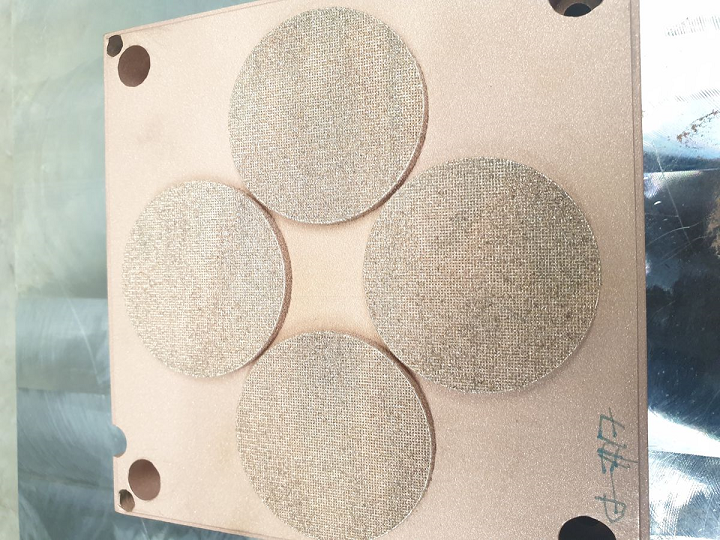As much as we all hoped it would be gone by now, COVID-19 is still spreading around the world, and so the pandemic continues. But, an interdisciplinary team of scientists and bioengineers worked together to develop a 3D printable antiviral material that they claim can actually kill the novel coronavirus, and potentially help lower the disease spread. PhD researcher John Robinson, Dr. Arun Arjunan, and Dr. Ahmad Baroutaji with the Additive Manufacturing Functional Materials (AMFM) research group at the University of Wolverhampton in the UK led the charge, and teamed up with the Ángel Serrano-Aroca group from the Catholic University of Valencia’s Biomaterials and Bioengineering Lab for rapid material development and anti-COVID viral analysis. The goal is to use the antiviral material in filtration systems and face masks in order to lower the risk of infection.
Wolverhampton’s AMFM researchers are experts when it comes to 3D printing microbial biomaterials, and wanted to look into the possibility of using 3D printed antiviral materials to lower both airborne and surface-based virus transmission, especially with new COVID-19 variants emerging, one or more of which could end up being a vaccine evasive strain.
“Covid-19 virus transmission can be indirect through airborne droplets or direct through contaminated surfaces. Therefore, the ability to control the transmission of the virus is critical to reduce the spread and limit the unknown long-term effects,” Robinson explained. “Also, with new variants emerging, and a concern that a vaccine evasive strain may evolve, there is further emphasis on the requirement for enhanced transmission control and prevention. The requirement for long-life masks and mask filters that can be disinfected is essential. As the pandemic continues to evolve, various situations are likely to appear unpredictably. To enable an immediate response and rapid solution, we created an antiviral material that could be 3D printed, and therefore can create antiviral surfaces when and where they are needed.”
The team used tungsten, silver, and copper to make their antiviral material. Silver has been found to have antimicrobial properties, which is great, but unfortunately the material is pretty pricey, so it’s not a cost-effective option on its own in terms of large-scale implementation, and especially not for single-use products. Copper is much less expensive than silver and has been shown to have anti-COVID-19 properties, and new research also shows that tungsten can help kill viruses. While this research is limited, it does show that tungsten has antimicrobial effects against some common pathogens. like E. coli and Staphylococcus aureus, which is why the researchers decided to combine all three in order to 3D print their COVID-killing material.
They used selective laser melting (SLM) technology to make their novel material, which is apparently displaying excellent results.
“Our antiviral material displayed a 100 per cent viral inactivation within five hours against a biologically-safe sample of Covid-19. This is a significant improvement on the previous copper coating results as all of the Covid-19 virus is eliminated. As such the copper-tungsten-silver material developed in this study could be utilised to reduce both surface contamination and the airborne spread of the Covid-19 virus,” Robinson said. “We hope that this material could have a number of uses including building filtration systems and face mask filters; for example in this project we used the antiviral material and 3D printing technology to create proof of concept mask filters for an open-source 3D-printed face mask.”
Interestingly, this isn’t the first reusable filter with antimicrobial properties that has been 3D printed in response to the COVID-19 pandemic. In April 2020, ExOne announced that it had worked with the University of Pittsburgh to 3D print copper filters using its binder jetting process. In the case of ExOne, the benefit of being able to tune the porosity of the print process, something that is easier to achieve with binder jetting, actually aided in the production of filters.
(Sources: Express & Star, The Engineer)
Subscribe to Our Email Newsletter
Stay up-to-date on all the latest news from the 3D printing industry and receive information and offers from third party vendors.
You May Also Like
Profiling a Construction 3D Printing Pioneer: US Army Corps of Engineers’ Megan Kreiger
The world of construction 3D printing is still so new that the true experts can probably be counted on two hands. Among them is Megan Kreiger, Portfolio Manager of Additive...
US Army Corps of Engineers Taps Lincoln Electric & Eaton for Largest 3D Printed US Civil Works Part
The Soo Locks sit on the US-Canadian border, enabling maritime travel between Lake Superior and Lake Huron, from which ships can reach the rest of the Great Lakes. Crafts carrying...
Construction 3D Printing CEO Reflects on Being Female in Construction
Natalie Wadley, CEO of ChangeMaker3D, could hear the words of her daughter sitting next to her resounding in her head. “Mum, MUM, you’ve won!” Wadley had just won the prestigious...
1Print to Commercialize 3D Printed Coastal Resilience Solutions
1Print, a company that specializes in deploying additive construction (AC) for infrastructure projects, has entered an agreement with the University of Miami (UM) to accelerate commercialization of the SEAHIVE shoreline...
































